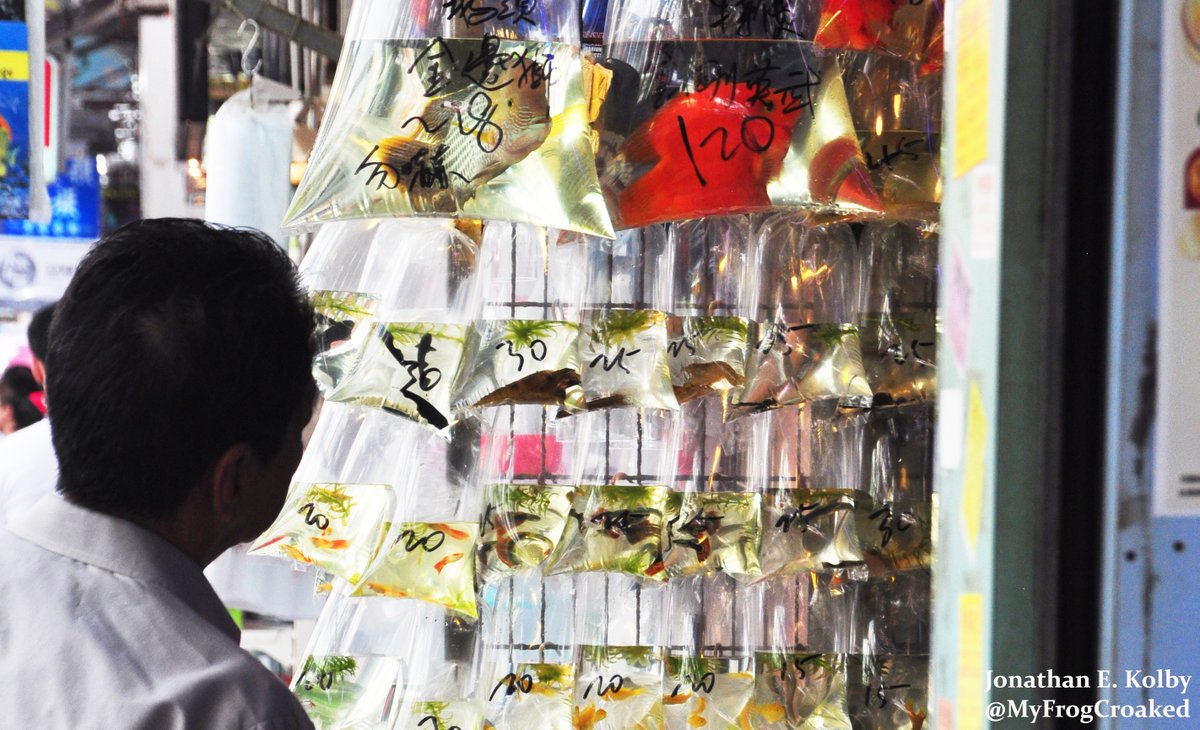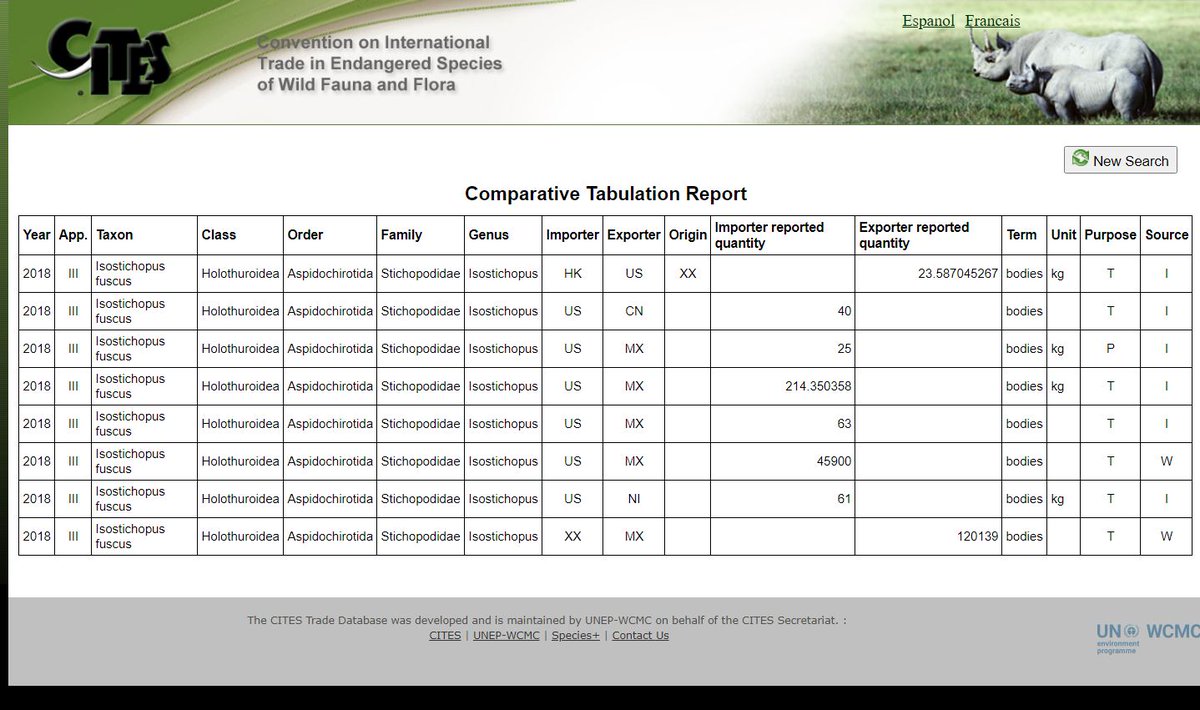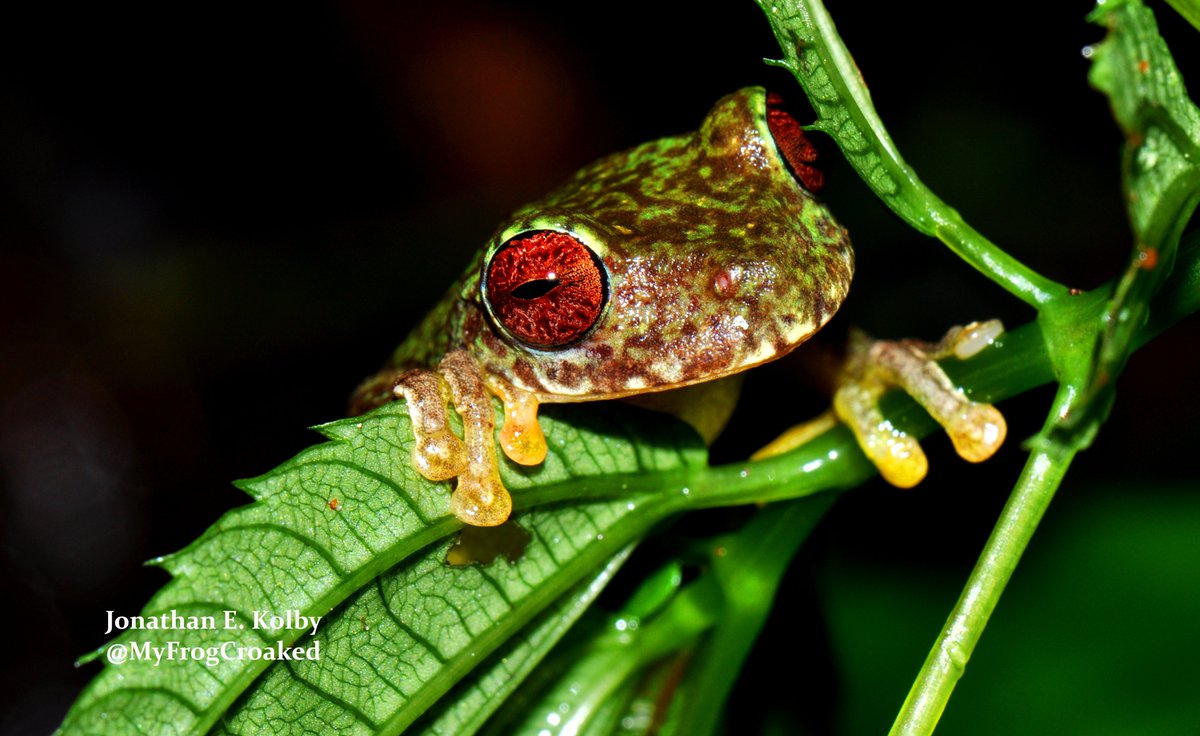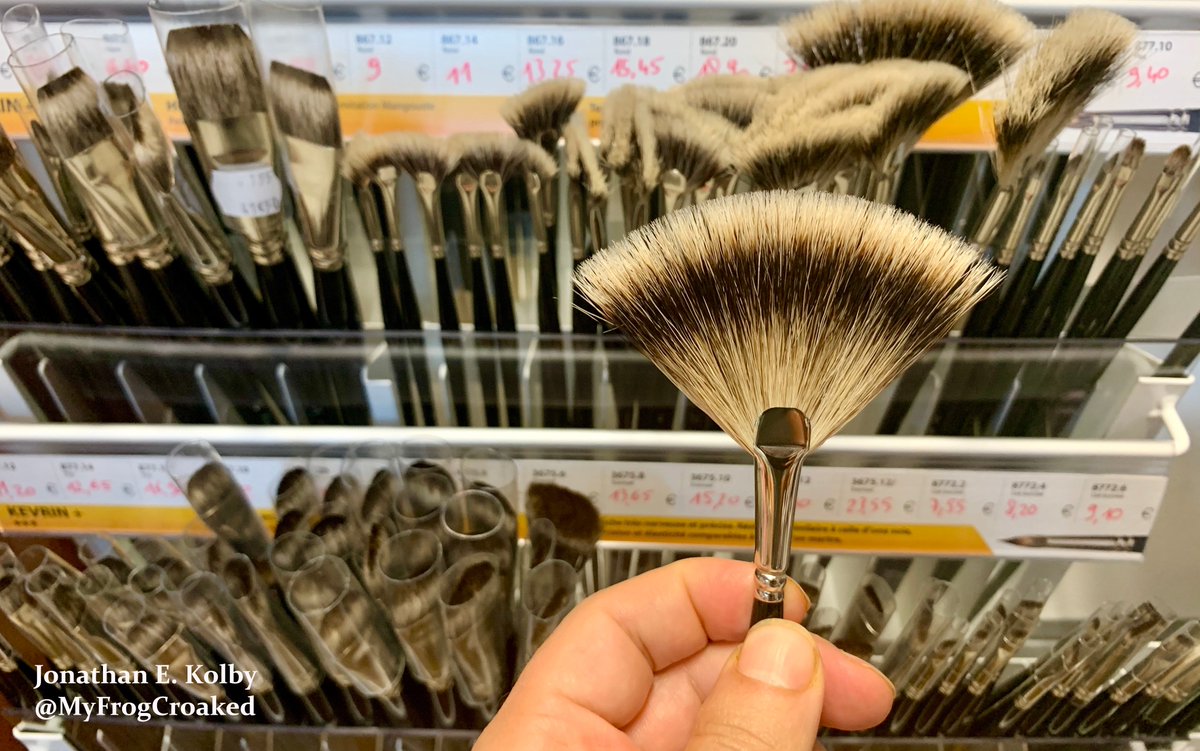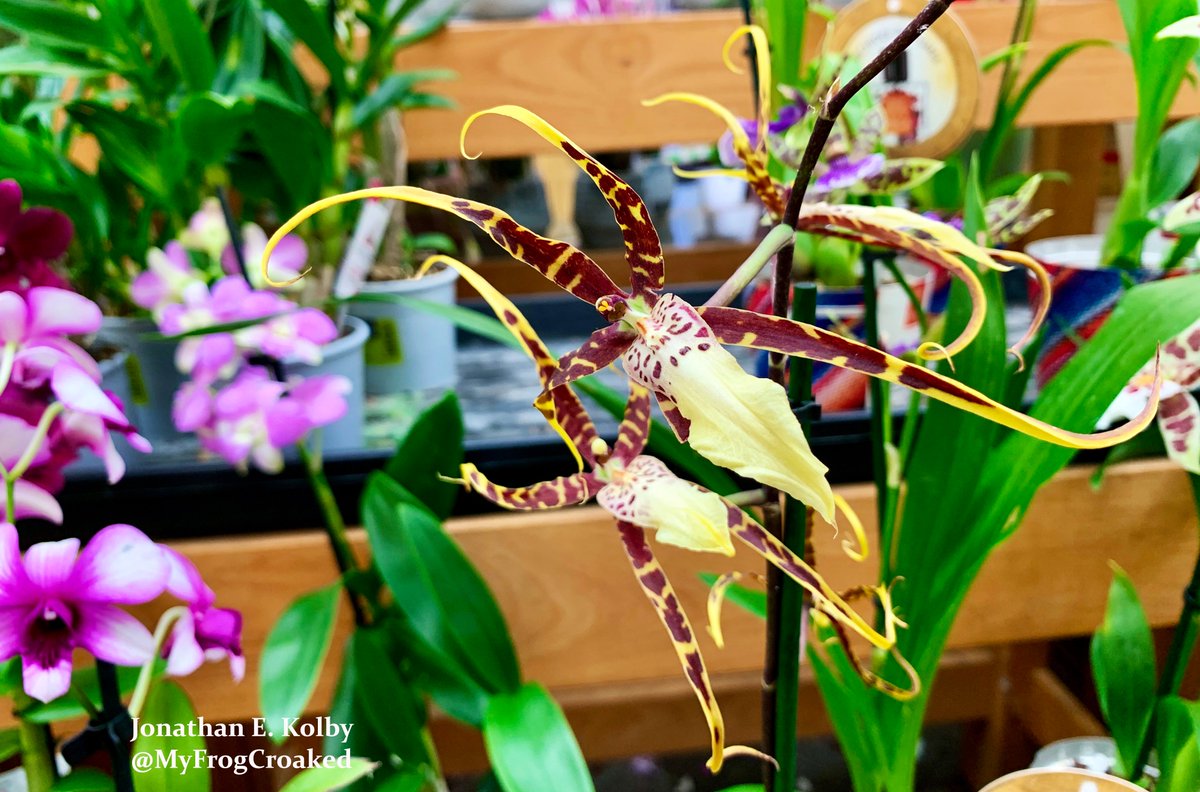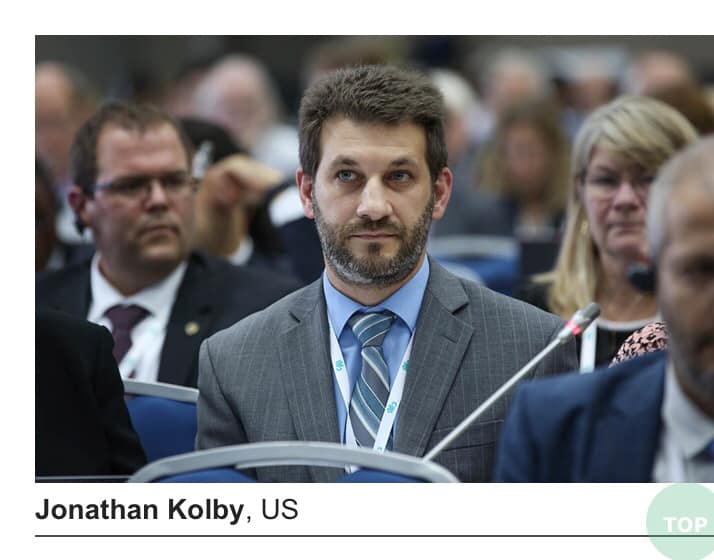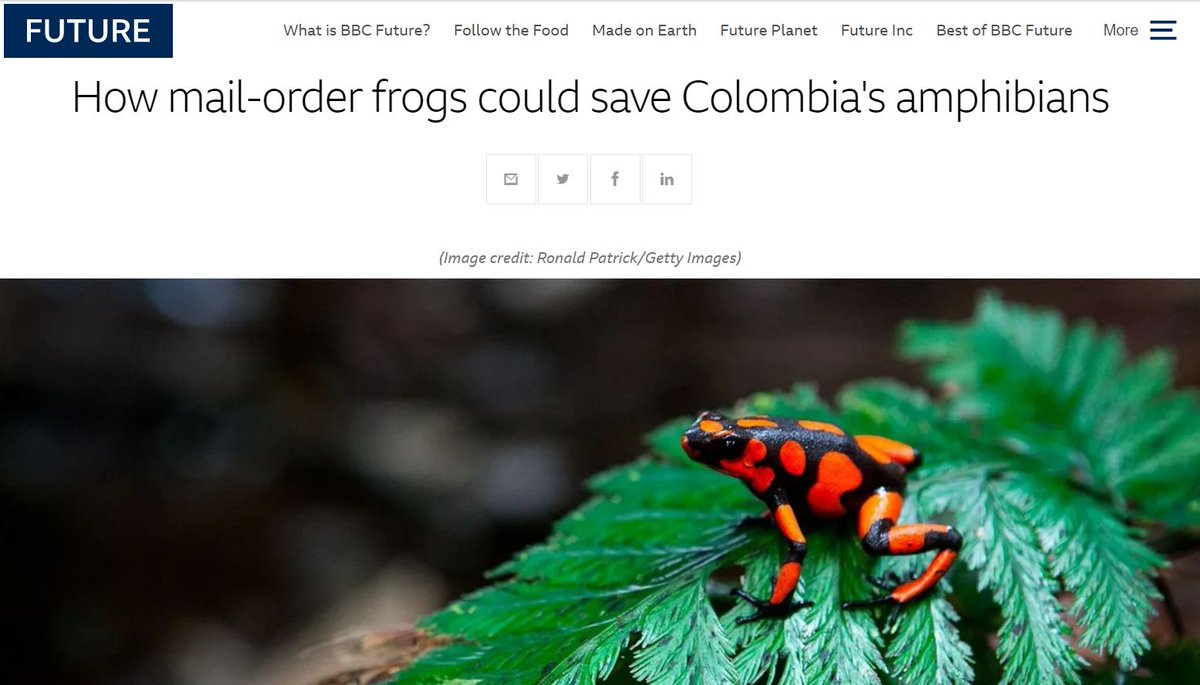A number of misconceptions: "To curtail #WildlifeTrade, the Convention on International Trade in Endangered Species ( @CITES) was created in 1975. Unfortunately, many #animal species are not monitored by this convention which focus mainly on well-known species" (1/N) #SciComm https://twitter.com/RacingXtinction/status/1349675151923634179
The intent of @CITES is to ensure the trade in #plants and #wildlife trade is legal, sustainable & not detrimental to the species. Its purpose is not to "curtail" or purposefully reduce #WildlifeTrade, even though listings are sometimes associated with reduced trade volume (2/N)
It's very important to describe these policies carefully. In my work as a @CITES Policy Specialist, many people approached me with the impression that CITES Appendix II listings are trade bans. It's important to understand that trade often continues (3/N) #wildlife #politics
It also states that, "Unfortunately, many #animal species are not monitored by this convention which focus mainly on well-known species." Not exactly -any species where trade is a genuine threat to its survival is eligible for proposal by a Party for @CITES listing (4/N) #SciComm
But it's easy to see where this #WildlifeTrade misconception originates: You generally need enough data about the trade in a species to demonstrate why it should become @CITES-listed. Which species do governments choose to maintain this level of information for? (5/N) #SciComm
People are often surprised to learn that the USA is the only country (to my knowledge) to monitor & record *all* international #WildlifeTrade that crosses its borders. @USFWS has a dedicated staff of Wildlife Inspectors for this (which was one of my previous jobs) (6/N) #SciComm
In most countries, this is instead performed by Customs officers and usually only the trade in protected #wildlife (which already requires a permit) is recorded to species level. This creates an *enormous* #data gap in our understanding of #WildlifeTrade #sustainability (7/N)
Due to this phenomenon, it may appear @CITES "focuses mainly on well-known species", but this isn't true. Lesser-known species become listed too. Reliable #WildlifeTrade data are vital in CITES proposals, but for reasons mentioned above they aren't always available (8/N) #SciComm
Another thing this article states: "Many species are under the radar & there is little knowledge about their trade. As a result, some of them are traded despite the fact that they are endangered." I find it interesting how people use the word " #endangered" (myself included) (9/N)
I think when we use the word #endangered, we should try our best to state which authority we're referring to. It's two very different things to say something is Endangered per the @USFWS Endangered Species Act versus Endangered as per @IUCNRedList #WildlifeTrade #SciComm (10/N)
So why does our langue matter so much? Because " #endangered" per the @USFWS Endangered Species Act carries strong legal implications whereas as "endangered" per @IUCNRedList is a non-legally binding scientific evaluation #WildlifeTrade #SciComm(11/N)
But here's where some confusion may arise: Certain countries have formed national #laws incorporating guidance from @IUCNRedList assessments. Thus, species listed as endangered by @IUCNRedList may appear on a country's list of species legally recognized as #endangered (12/N)
The USA is *not* one of those. Many species listed as #endangered on @IUCNRedList do not appear under the Endangered Species Act (ESA). One of my study species, the endangered Mossy Red-eyed #Frog is a good example of a species listed by @IUCNRedList but not ESA #SciComm (13/N)
This article also states that, "Clearly, one should not buy #wildlife and avoid participating in the #WildlifeTrade." Personally, I find this kind of language problematic for several reasons, as follows: (14/N) #SciComm
First it's important you understand how ubiquitous the int'l #WildlifeTrade is in our daily lives. Wear a button-down shirt w/mother of pearl buttons? Buy one of the #orchids at Trader Joes? Eat calamari? Paint w/badger or Siberian weasel brushes? This is #wildlife trade! (15/N)
I truly respect different personal values & opinions about whether or not #WildlifeTrade is inherently good or bad. I find these discussions meaningful. But before vilifying it as "all or nothing", it's important to acknowledge the diversity & its complexity (16/N) #SciComm
Most of you see me with a #frog conservation hat, but this is me with my @CITES Policy Specialist hat. As a former @USFWS representative of the US, my role was to always speak from the #science, laws & processes. Hope you enjoyed my #WildlifeTrade thread! (17/17) #SciComm @natgeo
PS-- We still need better #science about these issues and always will! I'll post a separate thread about that soon, including #WildlifeTrade data limitations, major pitfalls, and room for improvements. Stay tuned! #SciComm
PS2- I posted this separately, so I feel it bears repeating here: In these threads, I try my best to use informative language that remains respectful to the authors of the work I discuss. If you ever see things I could do better, I welcome your constructive #SciComm critique too!
PS3 - Here's a question many of you sent me after this thread: "Can selling captive-bred #endangered species help reduce poaching of #animals from the wild?" Here's an interesting example regarding #frogs. I'm curious what *you* think: https://www.bbc.com/future/article/20201216-how-mail-order-frogs-could-save-colombias-amphibians #WildlifeTrade
And to add some #reptiles into the mix, here's a recent story about the challenges of managing a legal and #sustainable trade in chameleons from #Madagascar https://news.mongabay.com/2021/01/pet-trade-relies-on-disposable-wild-chameleons-from-madagascar/ via @Mongabay #WildlifeTrade #nature

 Read on Twitter
Read on Twitter